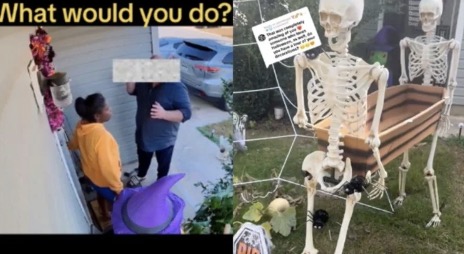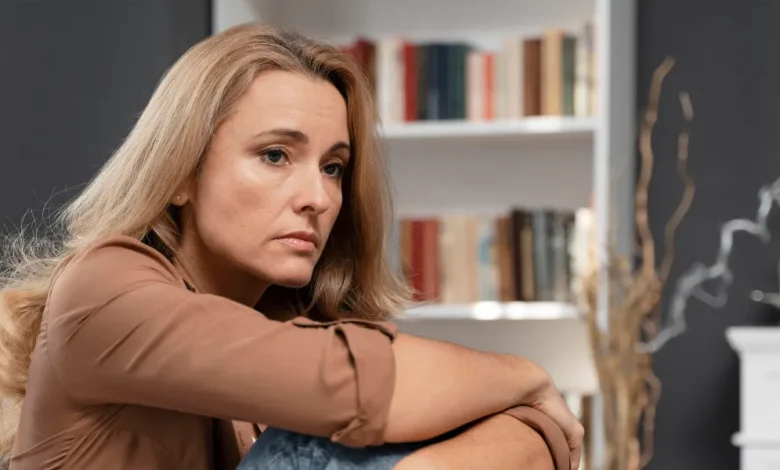
It’s spooky season—a time for fun, scares, and a bit of darkness. During this time of year, we expect to see creepy decorations everywhere. It’s not yet time for the cheerful holiday season.
However, just because Halloween is near doesn’t mean we can’t show kindness. One Halloween fan shared this message in a TikTok video that has since gone viral.
Salena Webb loves Halloween. She is a mother of four from South Carolina, and like many others, she celebrates by decorating her yard with Halloween items. Salena created a whole graveyard scene in her front yard, complete with ghosts, spiderwebs, pumpkins, a witch, tombstones, and skeletons carrying a casket. It took a lot of time to set up the display. But when her neighbor came to ask her to take it down, she agreed.
Her neighbor asked her to remove some decorations to make things easier for his elderly father.
Salena shared the moment her neighbor visited her to make the request in a TikTok video. In the video, the neighbor explains, “Hey, I know you’re celebrating Halloween. My dad just got diagnosed with lung cancer. He thinks the decorations are a bit scary.” He then points to the graveyard scene and asks, “Would you mind taking just the casket out?”
Salena felt sympathetic right away. Since her neighbor’s dad often spends time in his garage, which faces her yard, she understood why removing the casket was important. “I didn’t want to be a reminder of what could happen if he doesn’t beat cancer,” she told Insider. “I didn’t want to add stress to someone else’s life.”
Salena removed the casket and gave the skeletons badminton rackets instead. She moved the more scary decorations to her backyard. “I was a little sad at first,” Salena wrote in her TikTok caption, “But I realized that taking away the casket wouldn’t hurt me, but it might help my neighbor feel better as he deals with this news. Kindness is free, and compassion goes a long way.”
Many people praised Salena for her kindness. She posted the video and asked her followers what they would have done in her situation. While some said they wouldn’t have taken down their decorations, many praised Salena for her compassion.
“Now this is what being a good neighbor is all about. Kindness doesn’t cost anything. Thank you!” one user commented.
Another person wrote, “This was beautifully handled. The world needs more people like you! God bless you!”
Salena’s neighbor also appreciated her gesture. After she took down the casket, she brought him a card and some balloons. Even though there was a language barrier between them, she could tell he was thankful. He told her, “You’re good people.”
My MIL Left the House Every Thursday & Returned Smelling Terribly — I Went Pale When I Discovered Why

This is a compelling and well-layered story! The contrast between Olive’s quiet life as a designer and the hidden chaos her mother-in-law introduces makes for an intriguing narrative arc. Olive’s patience wears thin as her suspicions grow, and her decision to investigate unveils a secret life that feels almost cinematic, with the reveal in a hidden casino adding a dark twist to Cordelia’s character.
Olive’s journey—from suspicion to decisive action with the police and eventually a conditional forgiveness—provides a realistic portrayal of the emotional toll such situations can have on family dynamics. The ending, where Olive and Xander offer Cordelia one last chance, strikes a hopeful yet cautious tone, suggesting a fragile possibility for redemption.
If you’d like to add anything more, such as further development of the family’s perspective or even expanding Olive’s inner thoughts, it could bring even more depth to the story!



Leave a Reply